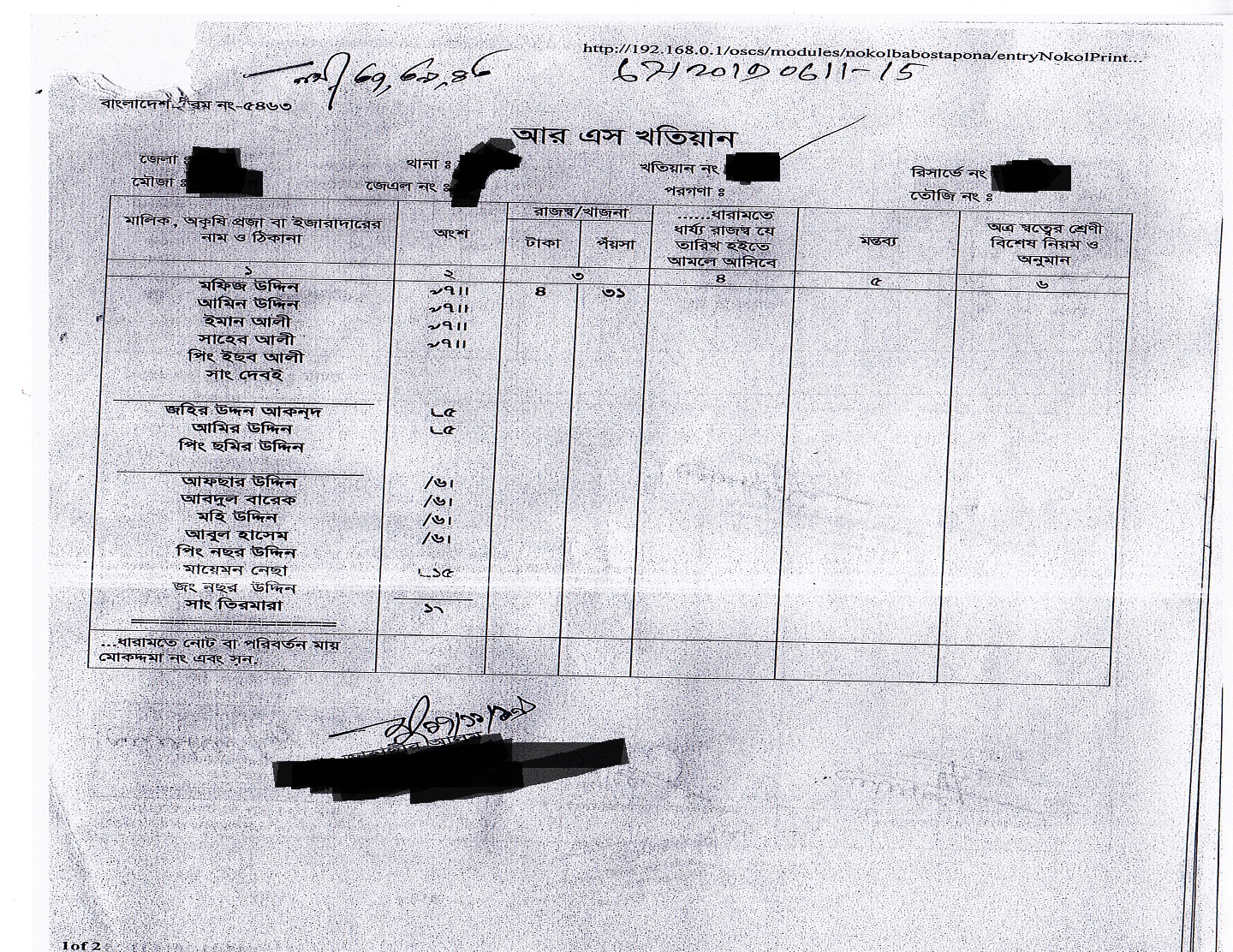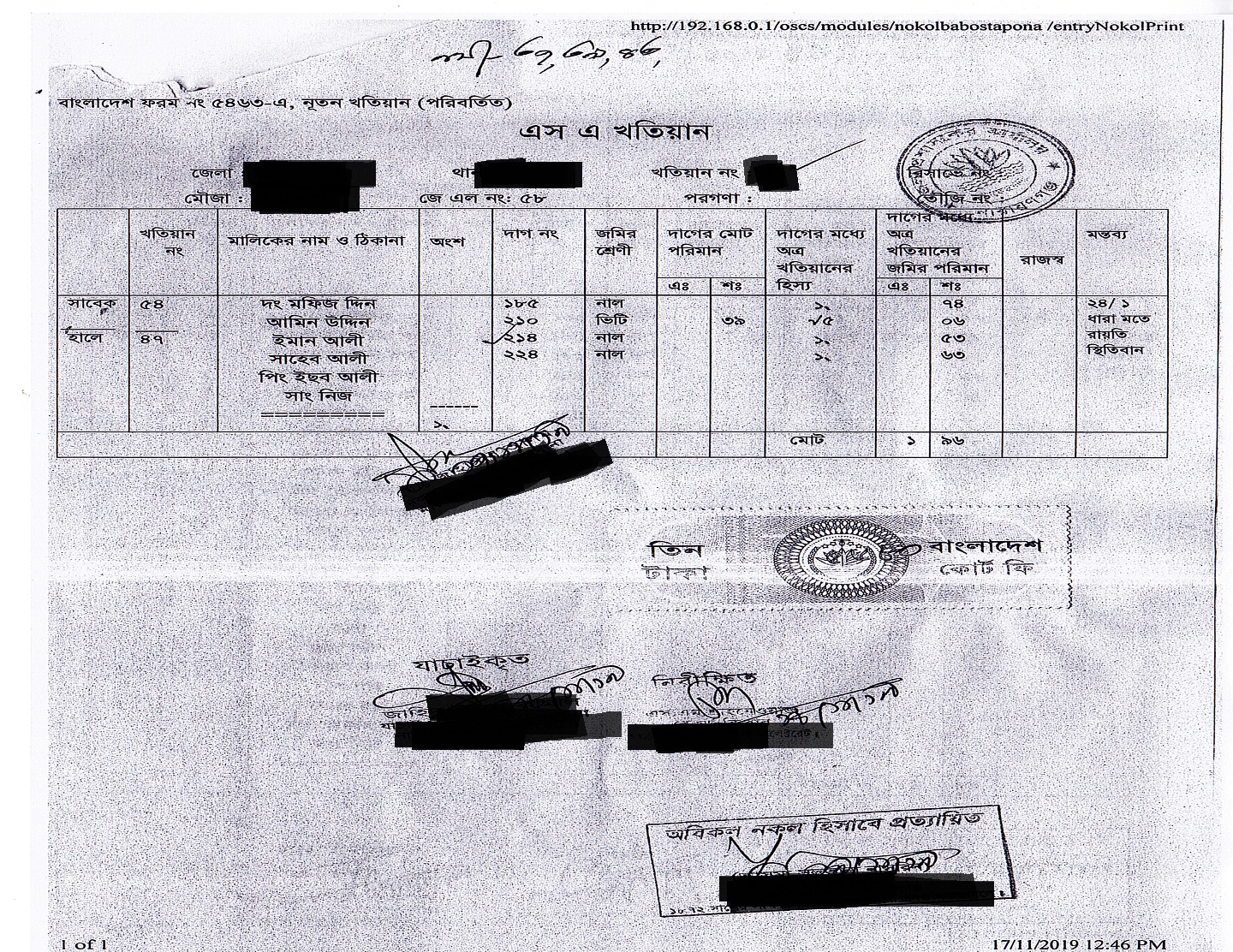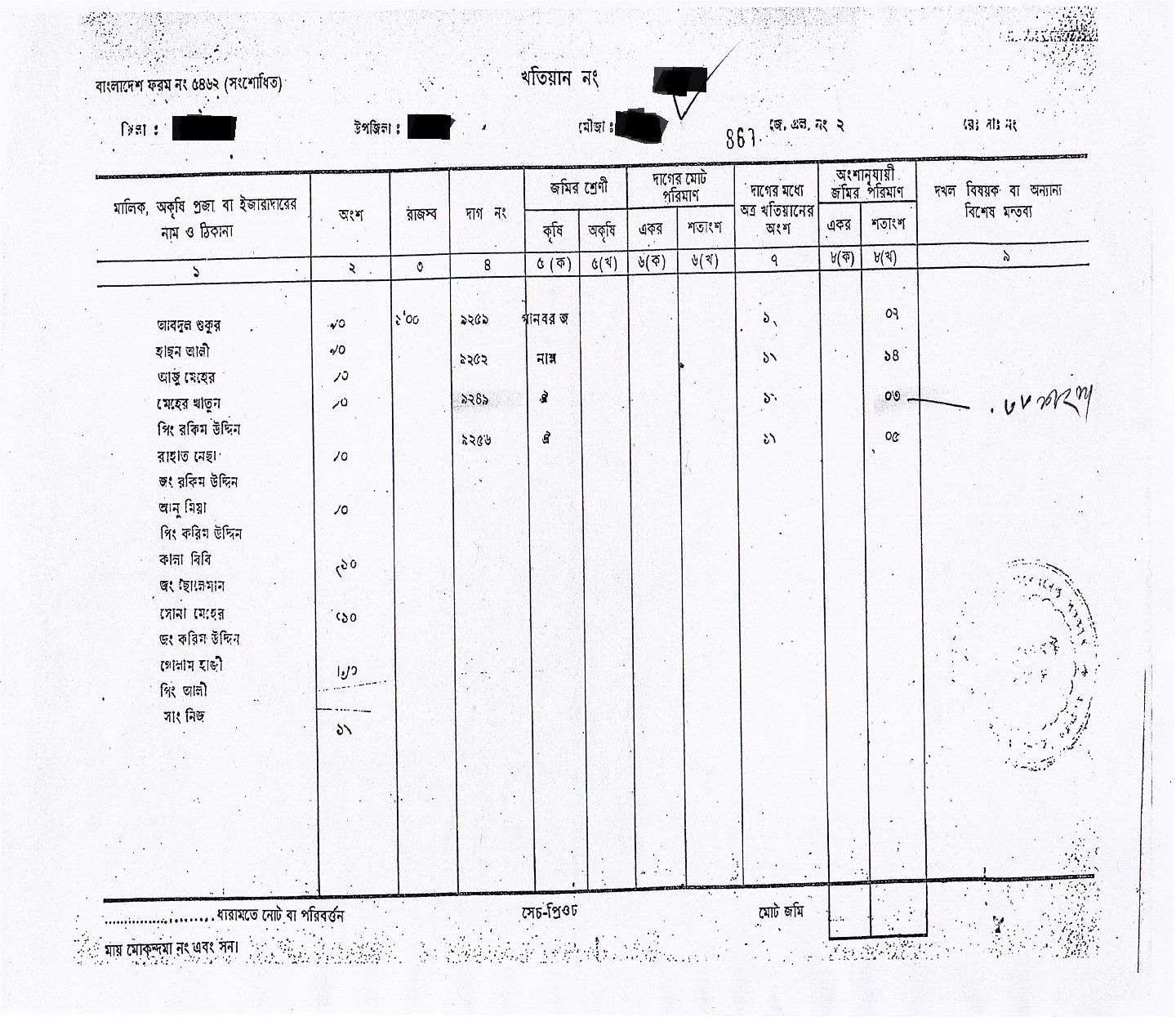You need to check several documents thoroughly in order to validate the authenticity of a property’s ownership before purchasing it. These documents play a vital role in determining the rights and obligations over the property as well as support the evidence of title and possession of it. Khatiyan is one of them. It determines the land type, portion of an owner, easement right, amount of Land Development Tax payable, etc. However, it can get a little confusing with all the different types of khatiyan and their role in the property validation process. In this article, we will gonna discuss khatiyan, its functionality, and its importance.
Khatiyan
Khatiyan (Record of Rights), Sottolipi, or Porcha is a document for identifying land. This documentation was introduced in 1885 under the Bengal Tenancy Act (Act No. VIII of 1885). Before the introduction of khatiyan, it was really difficult to assert anyone’s right over a piece of land. That is to say, there was no definitive way or legal records to identify who owns what and how. To tackle this confusion, in 1885, the Bengal Tenancy Act defined the rights and obligations of all the land by conducting a land survey so as to prepare a series of permanent land records called Record of Rights or Khatiyan for the holders of land as well as for the Government.
The main objective of the survey was to prepare a plot-to-plot survey and settlement on direct identification of the holder of the plot. But how does this work? – Every sub-district of a district is divided into small plots otherwise known as Mouza. And when there is a need to divide that Mouza into further plots, a Khatiyan is prepared. Every Khatiyan has a number. All the Khatiyans of a Mouza are kept according to the serial number in a bound volume.
Contents of Khatian
Khatiyan determines a number of important things. It doesn’t ascertain the entitlement of the possession of the land but works as a piece of supporting evidence of the Title Deed (another important document for validating the ownership). To that end, a Khatiyan or Record of Rights contains the following information:
- Khatian number;
- Mouza,Upazilla, District and J.L.No;
- Name, father’s name and address of the owner or owners;
- Plot (dhag) number;
- Portion of the owner or owners;
- Class and nature of the land;
- Amount of land development tax payable;
- Total amount of land (dhag wise) etc.
Different types of Khatiyan
Four different types of Khatiyan have been prepared under different surveys up until now. Every one of them has its own purpose and functionality. Here is a brief description of each type.
CS Khatiyan

Cadastral survey or CS Khatiyan was initiated in Ramu Thana of Cox’s Bazar in 1888-89 and completed in Dinajpur. The survey was conducted entirely by the Survey Department under the Bengal Tenancy Act, 1885 and completed in 1940.
RS Khatiyan

After the CS Khatiyan, a lot of complaints had been filed against the inaccuracy of CS Khatiyan. But it took 50 years to issue a revision. RSKhatiyan or Rivisional survey was conducted to revise the C.S. record. It was started in the Chittagong district and the purpose of this survey is to update the amount of land, owner’s name, and possessor’s name. Which in turn made it more authentic than the CS khatiyan.
SA Khatiyan

This Khatiyan was done under the State Acquisition and Tenancy Act, 1950, that is why it is called State Acquisition Survey. It is also known as Pakistan Survey (P.S.) because it was conducted in the Pakistan Period. However, neither this is a practical survey nor based on a field survey. This khatiyan was made on the information given by the Zamindar or Landlord. The survey was concluded within a remarkably short time from 1956 to 1964 through province-wise state acquisition settlements. This khatiyan is not considered to be accurate.
BS Khatiyan

Bangladesh Survey (B.S.) Khatian was prepared after the independence of Bangladesh but started before the independence. The survey operation conducted during 1970-1990 under the State Acquisition and Tenancy Act, 1950 and B.S. Sheet was prepared during 1970-1985. The survey is still underway. That is why this is the more accurate khatiyan of all. This survey is known as Bangladesh Survey and the khatiyan made from BS survey is known as BS Khatiyan or Bangladesh Survey Khatiyan.
There is another special kind of Khatiyan also known as “Namjari”. This is really important for two different reasons. Number one, Khatiyan is always prepared through a survey but as it turns out, it doesn’t always happen. And if the property is transferred or inherited in-between two surveys then it is mandatory that you mutate and replace the current owner’s name with the old owner in the Khatiyan. Number two, it is necessary for a holding to be created to pay the land tax (Khajna).
All in all, khatian is a very important piece of documentation that is absolutely necessary when validating the authenticity of a property’s ownership. But one thing to remember is that this document alone by any means doesn’t determine the ownership of any property. It may be a good document for possession but doesn’t create ownership or title.



